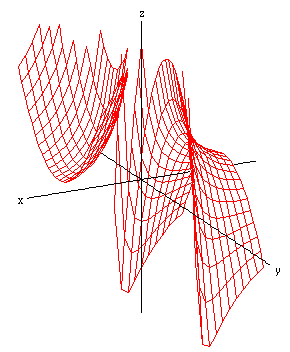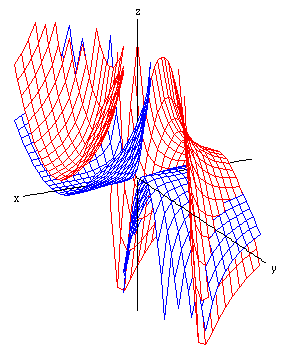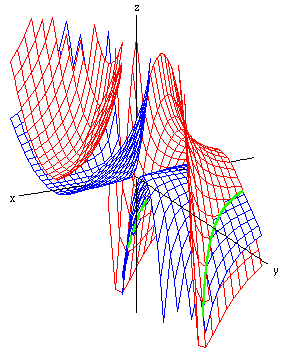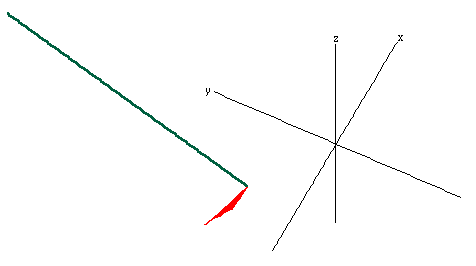


| Though the theme of this page is the points that
lie on both of two surfaces, let us begin with only one, the contour
|
 |
| All vectors normal to the surface at a point
(x,y,z) on it are multiples of the gradient |
 |
| It appears from the diagram above that there are no points with positive x-values that are on both surfaces at the same time; but in the region where x < 0 and z < 0, it appears that the two surfaces intersect, i.e., they have some points in common. Those points are arranged in two curves, drawn in green in this diagram. |  |
Algebraically, we are
looking for the points (x,y,z) that make both of the
equations true:
Roughly, what we expect is that a single equation in three variables determines a surface in space; two equations determine a curve or curves (in the sense that the common solutions (x,y) of both equations form one or more curves); and three dermine a point or isolated points. Of course, exceptions abound: The solutions of the single equation x2 + y2 = 0 is the (one-dimensional) z-axis. And if we consider the infinitely many planes that all pass through the same line, then any two or more of their corresponding (linear) equations will still determine that common line. But "each new equation cuts down the dimension by one" is a handy rule of thumb.
Because I mentioned above that it is hard to see whether any points on the original surface x2z - xy2 = 4 have the property that the normals there are parallel to the yz-plane, let us take one of the points on our curve and look at the gradient vector there, to see whether it has the desired properties.
One point on the surface is (-2,2,-1), and the gradient
there is 8j + 4k,
so it is clearly parallel to the yz-plane. The real question
is the more basic one: Is it true that the gradient is always
perpendicular to the contour at its base? Here is a piece of the
original surface, with (-2,2,-1) at one corner and with the above
gradient vector drawn in dark green.
